BACK
Children are naturally drawn to open-ended art activities as they provide both joy and spontaneity in the creative process.
These activities are particularly valuable for preschool-aged children as they foster creativity, refine fine motor skills, and encourage authentic self-expression.
Unlike structured projects, open-ended art invites young minds to explore materials without the constraint of a predetermined outcome, cultivating both independence and confidence.
What Are Open-Ended Art Activities?
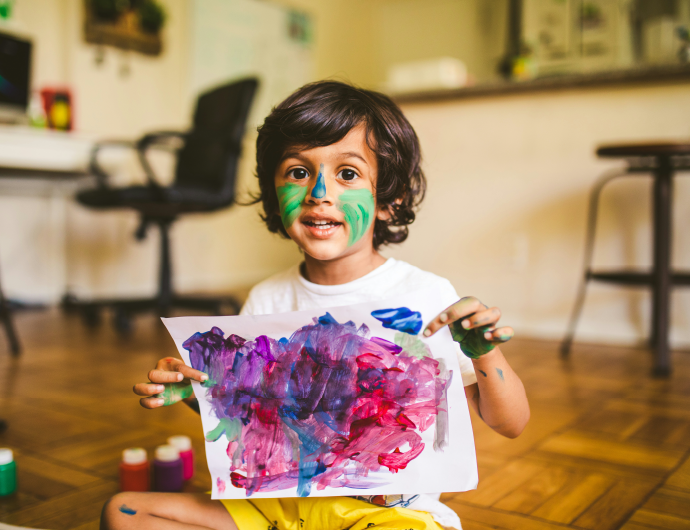
Open-ended art activities represent a versatile and imaginative approach where children are granted the freedom to select and manipulate materials, unconstrained by the expectation of a specific final product.
Rather than following rigid instructions to create a set design, children experiment with colours, textures, and shapes in ways that resonate with them.
The Benefits of Open-Ended Art for Children
Each of these activities offers a wealth of developmental benefits for preschoolers, including:
- Facilitating Emotional Expression: Enables children to communicate and process their emotions through art.
- Enhancing Social Skills: This promotes collaboration, sharing, and teamwork when creating art with peers.
- Stimulating Sensory Exploration: Enhances touch, sight, and sound perception through interaction with diverse materials and textures.
- Fostering Cognitive Growth: Encourages problem-solving, critical thinking, and spatial awareness through creative exploration.
- Developing Fine Motor Skills: Improves hand-eye coordination, dexterity, and grip strength by manipulating various materials.
7 Open-Ended Art Projects for Preschoolers
Engage your preschooler with these enriching and open-ended art activities that foster creativity and developmental skills. Each activity offers a hands-on approach, encouraging imaginative exploration and self-expression.
1. Bubble Wrap Prints
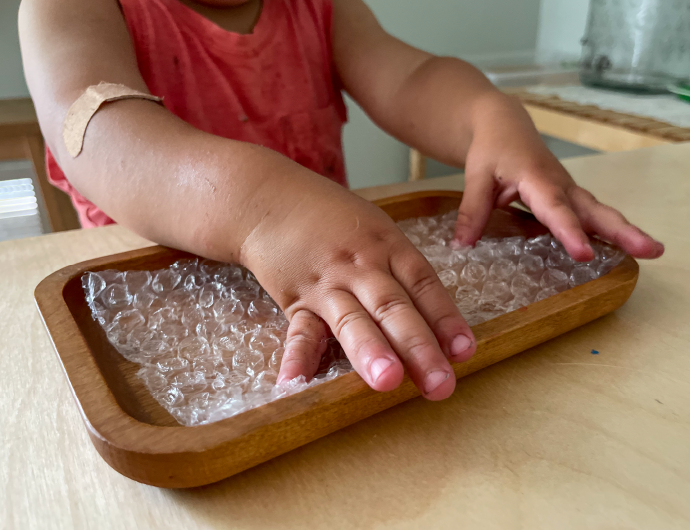
Age: 2–5 years | Difficulty: Easy
Transform bubble wrap into a fun stamping tool. By dipping the bubble wrap in paint and pressing it onto paper, children can create interesting textured prints. This activity encourages the exploration of patterns, textures, and colour mixing in an engaging, hands-on way.
Step-by-Step:
- Dip the bubble wrap in paint.
- Press the painted bubble wrap onto a piece of paper.
- Allow children to explore different colour combinations and patterns.
Benefits: It helps develop an understanding of textures, patterns, and colour combinations.
2. Watercolour Resist Art
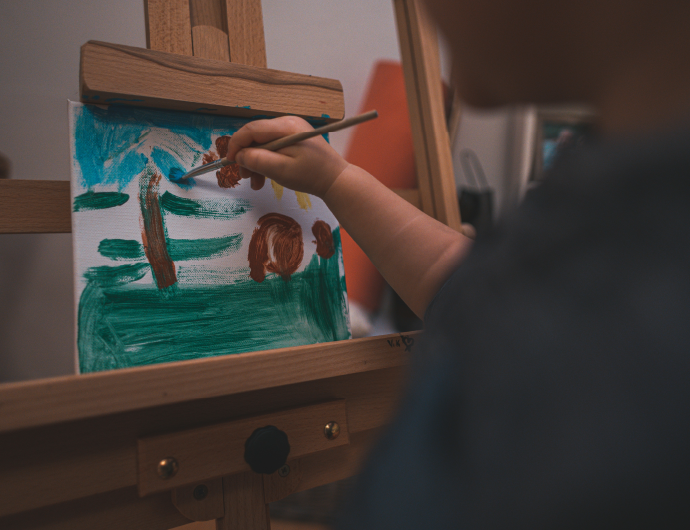
Age: 3–6 years | Difficulty: Medium
This activity uses watercolours and crayons to create exciting hidden art. Children can draw with a white crayon on a watercolour paper, and then paint over it with watercolours. The crayon will resist the paint, revealing their artwork in a fun, unexpected way.
Step-by-Step:
- Draw on watercolour paper using a white crayon.
- Once the drawing is complete, paint over the entire paper with watercolours.
- Observe how the crayon drawing emerges as the paint is applied.
Benefits: Encourages creativity, helps children explore resist techniques, and enhances fine motor skills.
3. Cardboard Weaving
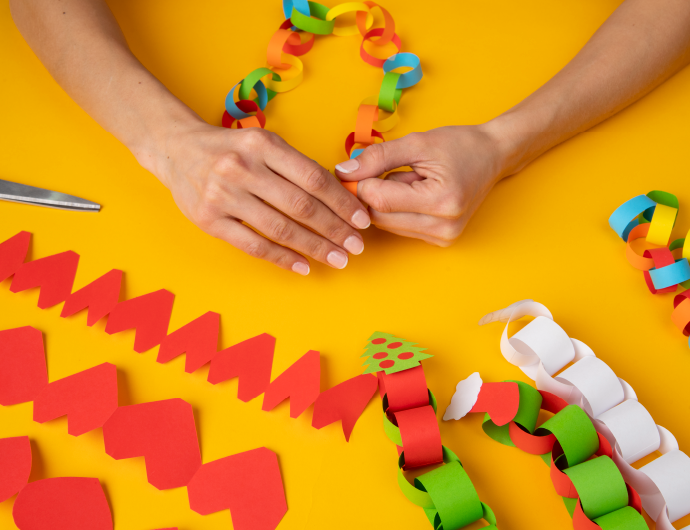
Age: 4–6 years | Difficulty: Medium
Create a simple loom with a piece of cardboard, cut with slits. Children can weave yarn or fabric strips through the slits, experimenting with patterns and colours. This activity improves patience, fine motor skills, and understanding of textile patterns.
Step-by-Step:
- Cut slits into a piece of cardboard to form a loom.
- Provide yarn or fabric strips to weave through the slits.
- Encourage children to create simple patterns or designs through weaving.
Benefits: Enhances fine motor skills and patience and introduces early textile design concepts.
4. Nature Prints with Paint
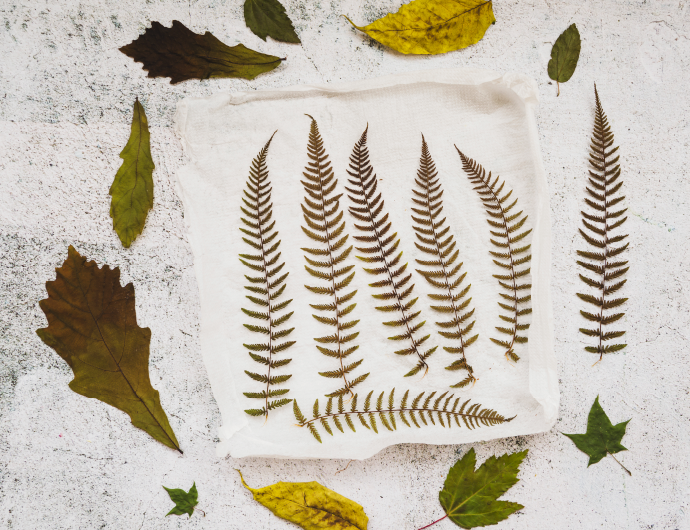
Age: 3–6 years | Difficulty: Medium
Take nature walks and collect leaves, flowers, or small objects, then coat them in paint and press them onto paper to create prints. This allows children to engage with the textures and forms of natural objects while creating unique artworks.
Step-by-Step:
- Collect leaves, flowers, or small natural objects during a walk.
- Paint the collected items with a brush.
- Press them onto paper to create prints.
Benefits: Promotes outdoor exploration and an appreciation for nature’s textures and shapes.
5. Salt and Watercolour Art
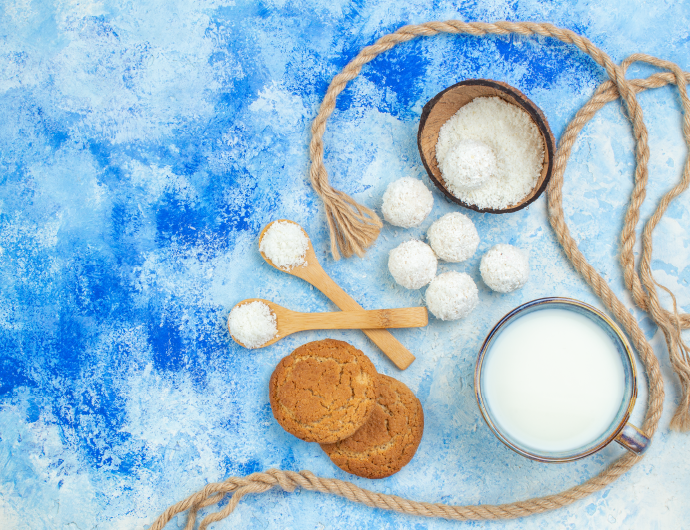
Age: 3–6 years | Difficulty: Easy
Explore the fascinating reaction between salt and watercolours in this engaging activity. Let children paint a picture with watercolours on wet paper and then sprinkle salt on top. The salt will absorb the paint and create a beautiful, textured effect.
Step-by-Step:
- Paint with watercolours on wet paper.
- Sprinkle salt onto the wet paint and watch the textures form.
- Experiment with different amounts of salt for varied effects.
Benefits: Fosters creativity and exploration of textures, as well as an understanding of the interaction between materials.
6. Tissue Paper Collage
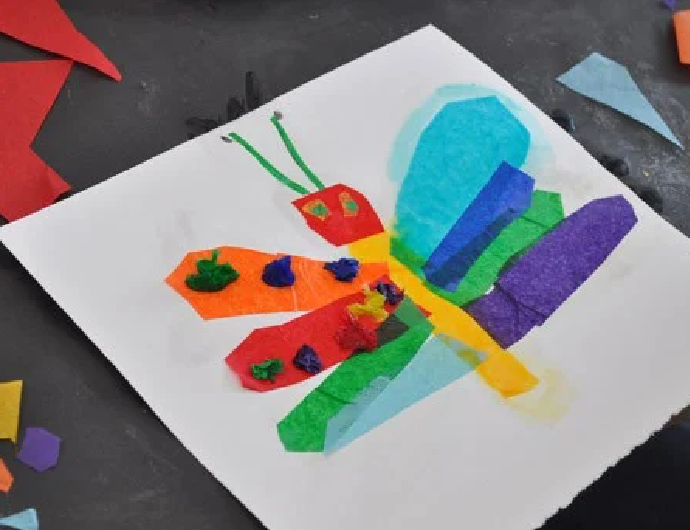
Age: 3–6 years | Difficulty: Easy
This colourful activity allows children to tear, layer, and glue tissue paper to create vibrant collages. The soft texture and translucency of tissue paper encourage sensory play and experimentation with layering colours and shapes.
Step-by-Step:
- Provide tissue paper in various colours and let children tear them into pieces.
- Offer glue sticks or a mix of glue and water with brushes.
- Encourage them to layer and stick the tissue paper onto a sheet of paper or cardboard to form abstract or representational designs.
Benefits: Enhances fine motor skills, promotes colour recognition and layering, and encourages creative decision-making.
7. Paper Plate Creations
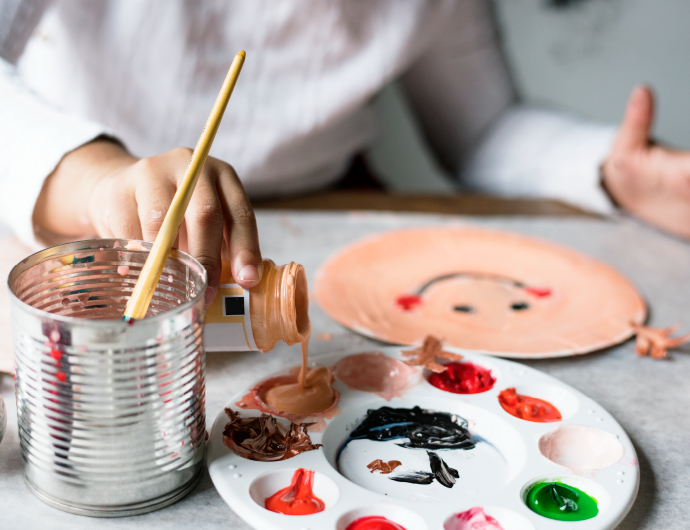
Age: 3–6 years | Difficulty: Easy
With just a paper plate and some imagination, children can turn a simple circle into masks, animals, abstract art, or entirely new inventions. This open-ended craft encourages storytelling, self-expression, and creative problem-solving.
Step-by-Step:
- Provide plain paper plates along with a variety of materials like markers, paint, yarn, googly eyes, buttons, and coloured paper.
- Encourage children to cut, colour, decorate, or glue objects onto the plates.
- Let them decide what the plate becomes—perhaps a sun, a face, or something entirely original.
Benefits: Sparks imaginative thinking, supports storytelling, and refines fine motor skills through cutting, gluing, and decorating.
Tips for Successful Open-Ended Art Activities
Open-ended art activities are all about fostering creativity, exploration, and self-expression. To make the most of these enriching experiences with your preschooler, consider these helpful tips:
- Offer Variety: Provide art tools and different materials like paints, fabrics, and natural objects to inspire creativity.
- Focus on the Process: Encourage exploration and experimentation rather than focusing on the final product.
- Give Freedom: Allow your child to create freely without strict instructions or expectations.
- Ask Questions: Use open-ended questions like “What happens if you mix these colours?” to spark their imagination.
- Create a Calm Space: Set up an uncluttered, inspiring area for your child to explore their creativity.
- Model Creativity: Show your child that making mistakes and experimenting is part of the fun.
- Encourage Reflection: Ask your child what they enjoyed or learned after completing their artwork.
- Use Nature: Incorporate natural materials like leaves and sticks to enhance creativity and connection with the environment.
Fostering Creativity at Little Skool House: Where Art Meets Learning
At Little Skool House, we believe in nurturing creativity and self-expression through open-ended art activities. Through our preschool curriculum, we provide a variety of engaging, hands-on experiences, we help children explore their imagination, develop essential skills, and build confidence in their abilities.
Our approach encourages independent thinking and fosters a love for learning that extends beyond the classroom. If you’re looking for preschool Pasir Ris, Little Skool-House offers the same creative and nurturing environment where every child can thrive. Join us today and discover how creativity can inspire your child’s growth—one masterpiece at a time!



